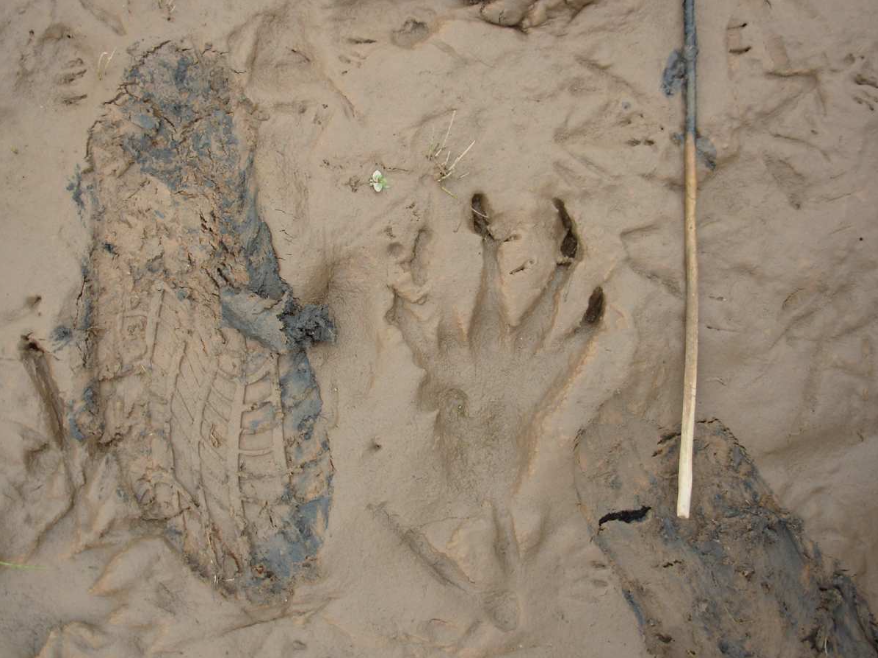At river mile 257.8, we sampled a small island consisting prominently of tamarisk, coyote willow and marsh vegetation. The island appeared to be geomorphically a post-dam terrace, an area that is likely covered with water during yearly peak flooding. This creates a wonderful opportunity for aquatic animals such as fish and mammals to use this riparian vegetation. On this island we noticed many of the large diameter willow appeared to be clipped a few inches from the ground. In the center of this diagonally cut surface, a small horizontal line was observed on the remaining stem. This pattern is indicative of beaver herbivory, presumably illustrating tooth marks. Tracks were also found in the mud as additional evidence of beaver. In other cases when tamarisk and coyote willow were observed side by side, such as Big Island at river mile 213.5, both tamarisk and coyote willow appeared to be cut. Therefore, it is possible that beaver on the Green River do not selectively prefer native over non-native plants and may merely utilize whatever is available during high flows.
Before surveying river mile 257.8, evidence of beaver presence on the Green River had been observed in several locations. While camped at river mile 268.5, cottonwood appeared to be cut by beavers. While floating down the river in Upper Browns Park we sighted numerous mounds of stripped branches that appeared to be beaver dens. While at a campsite in Lower Browns Park, river mile 252, colleague Carson Jeffres observed two beavers while he was walking around near the river’s edge. Beaver presence was observed to be limited to the park reaches of the river as we found no evidence of their presence in the Canyon of Lodore upon leaving Browns Park.


Beaver track (left, and right of the shoe print in the picture) were found in our Lower Browns Park sandbar survey site at river mile 257.8. Beaver herbivory on wood (right). Photos: Lacy Smith (left) and Murie, O.J. 1982. A Field Guide to Animal Tracks. New York, Houghton Mifflin Company(right)
